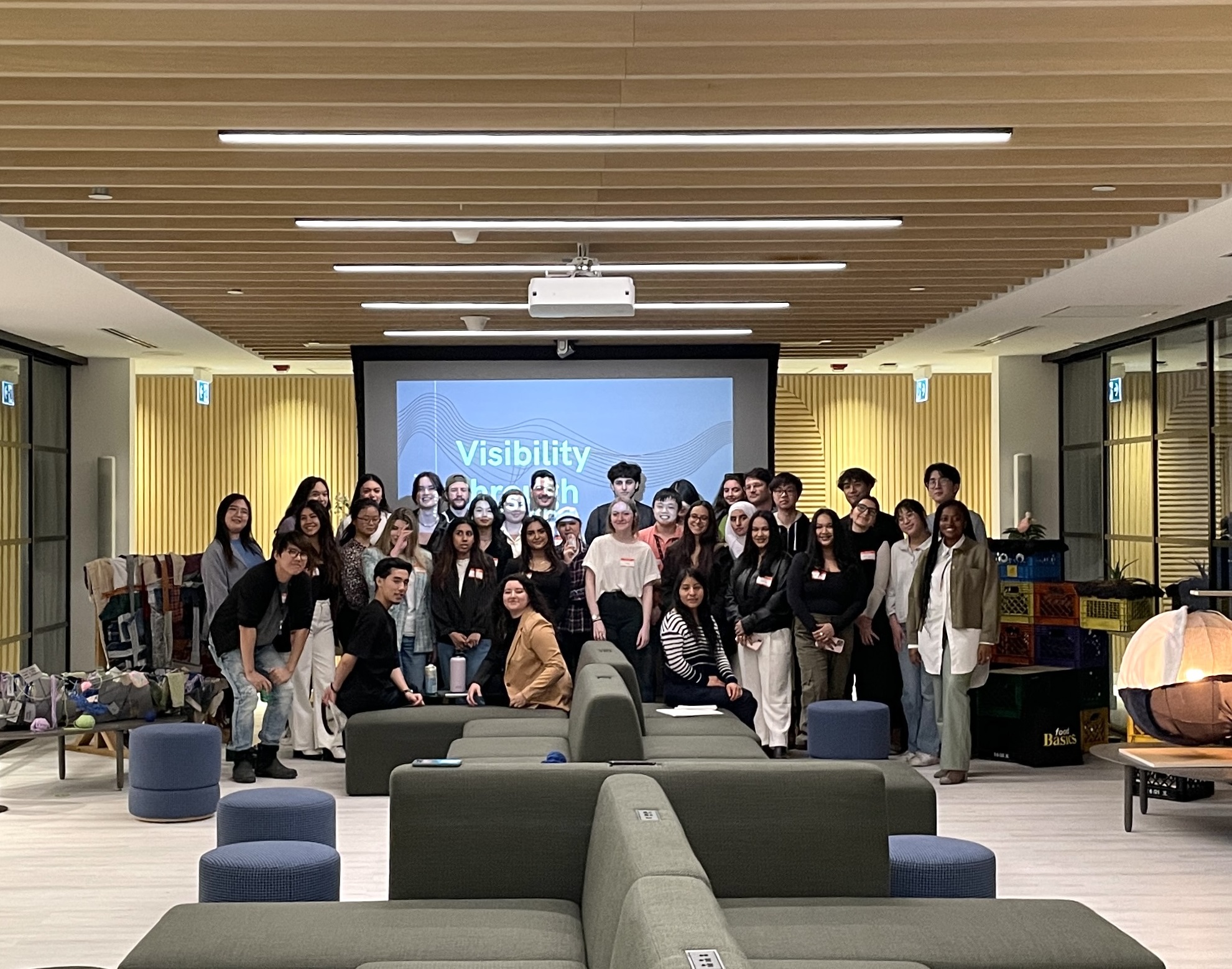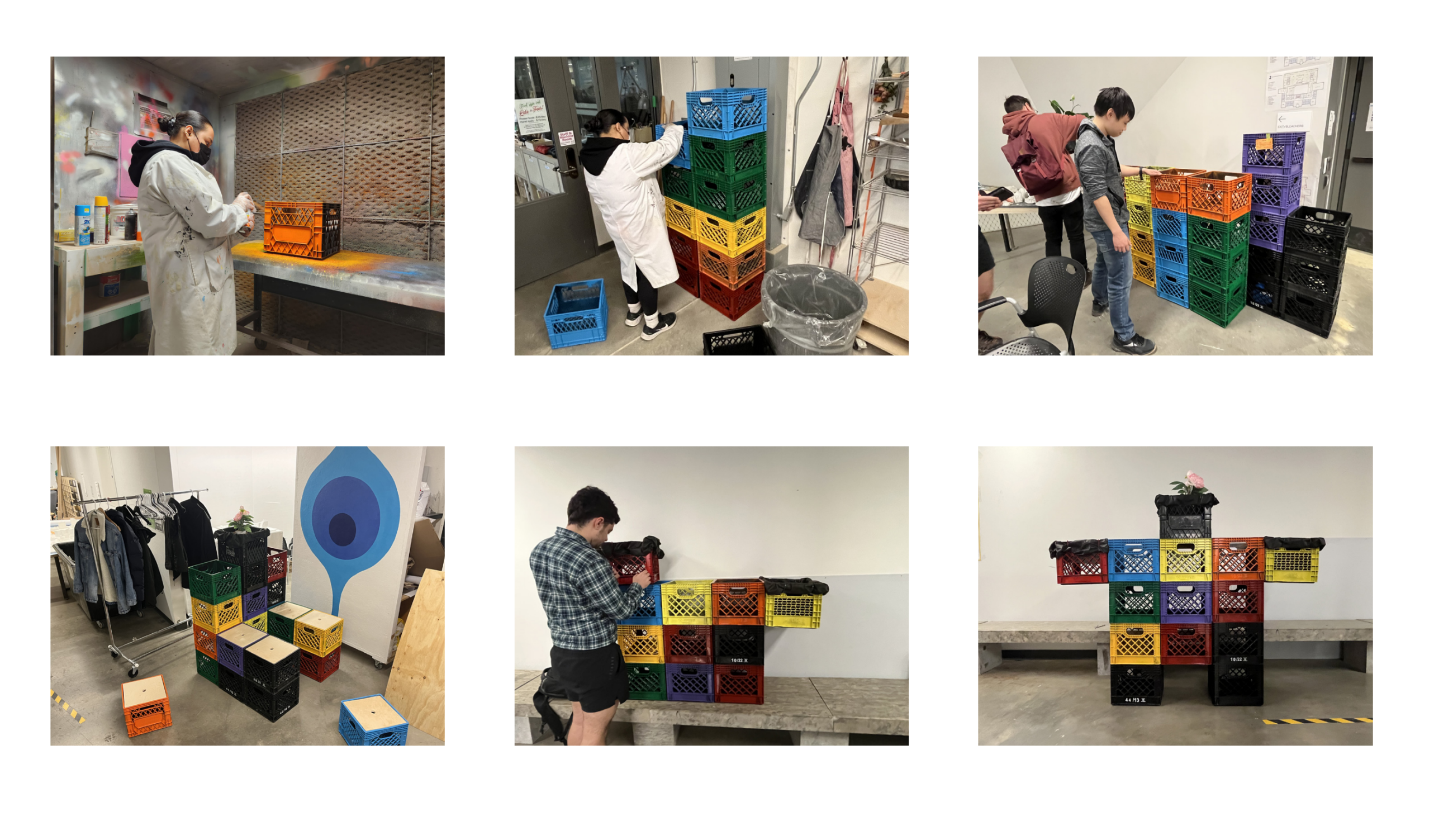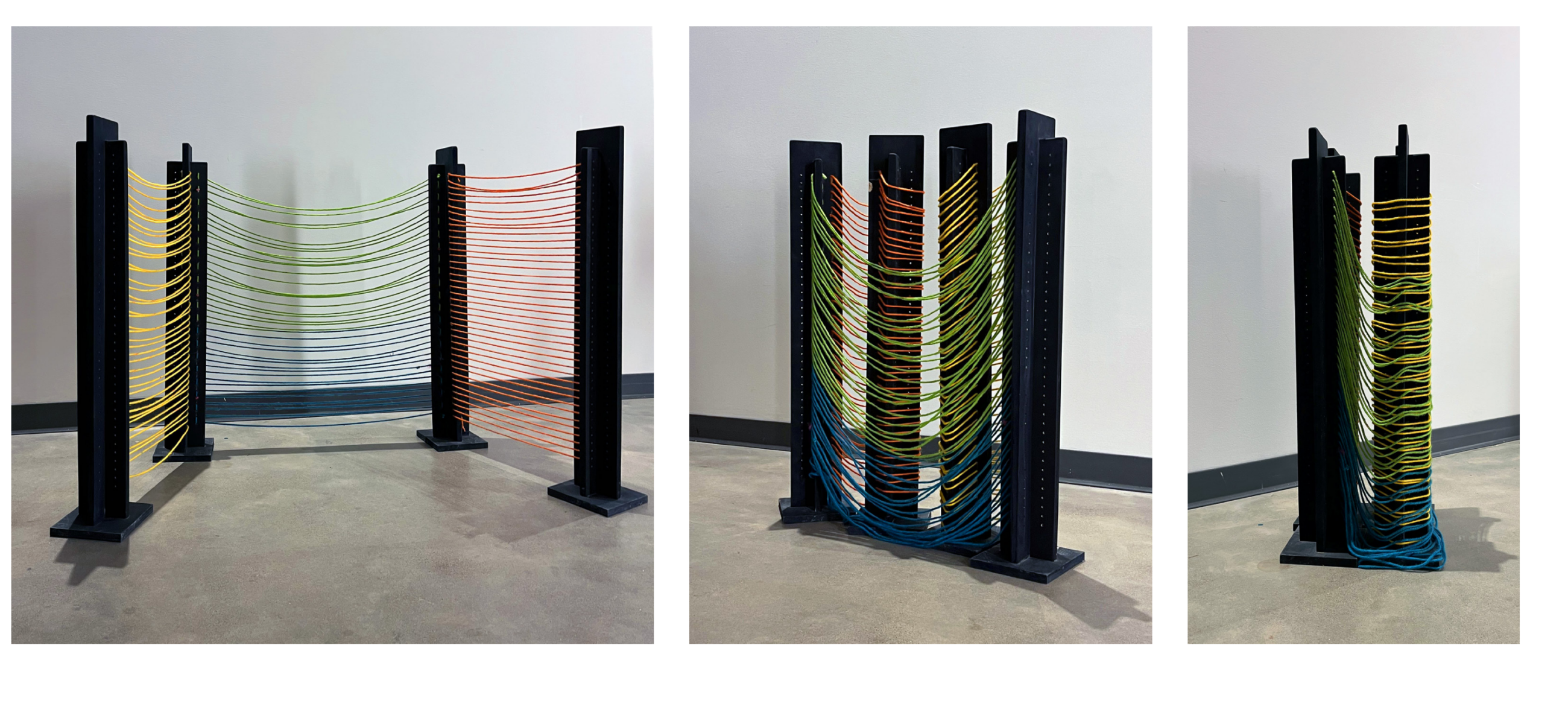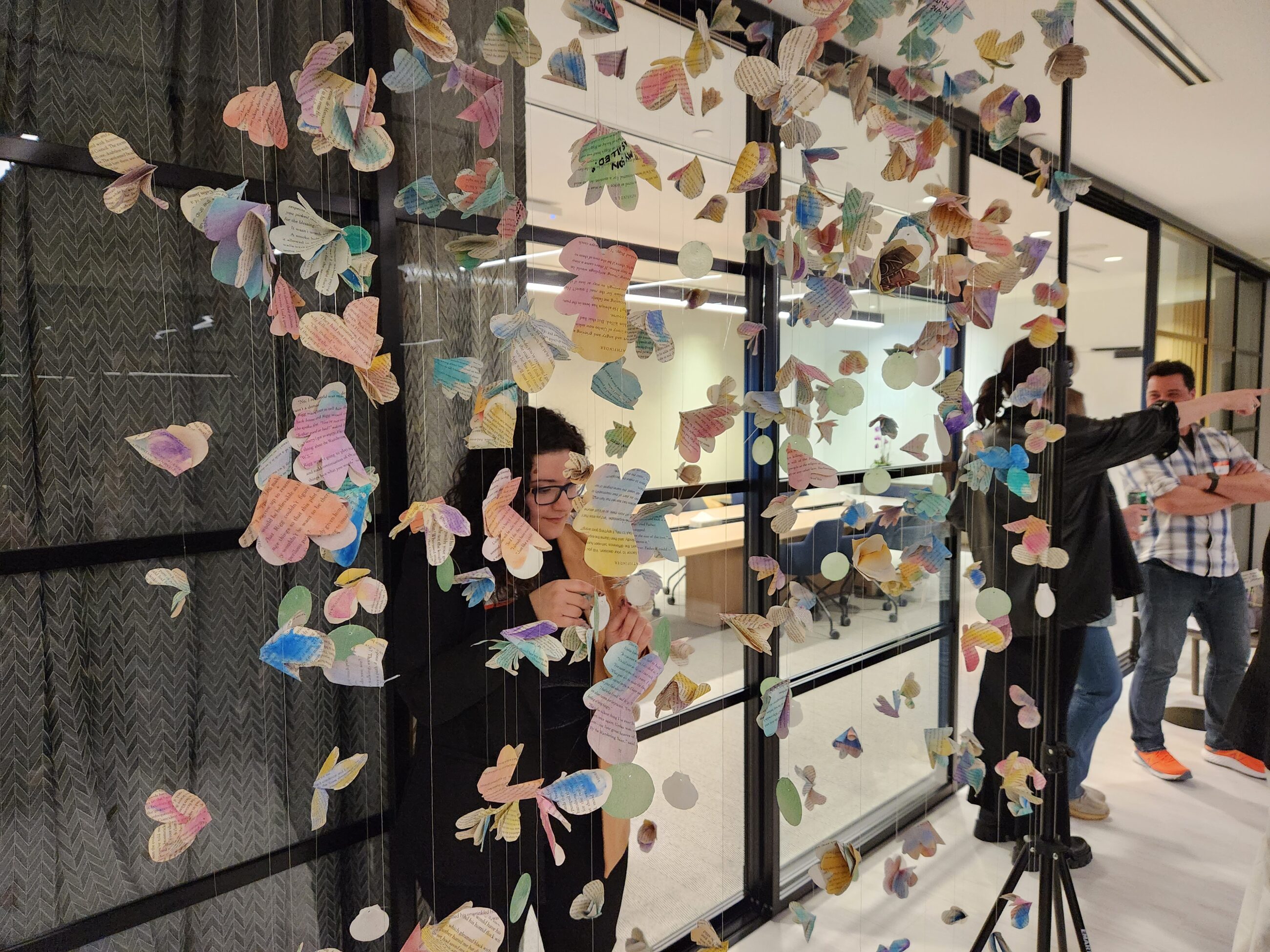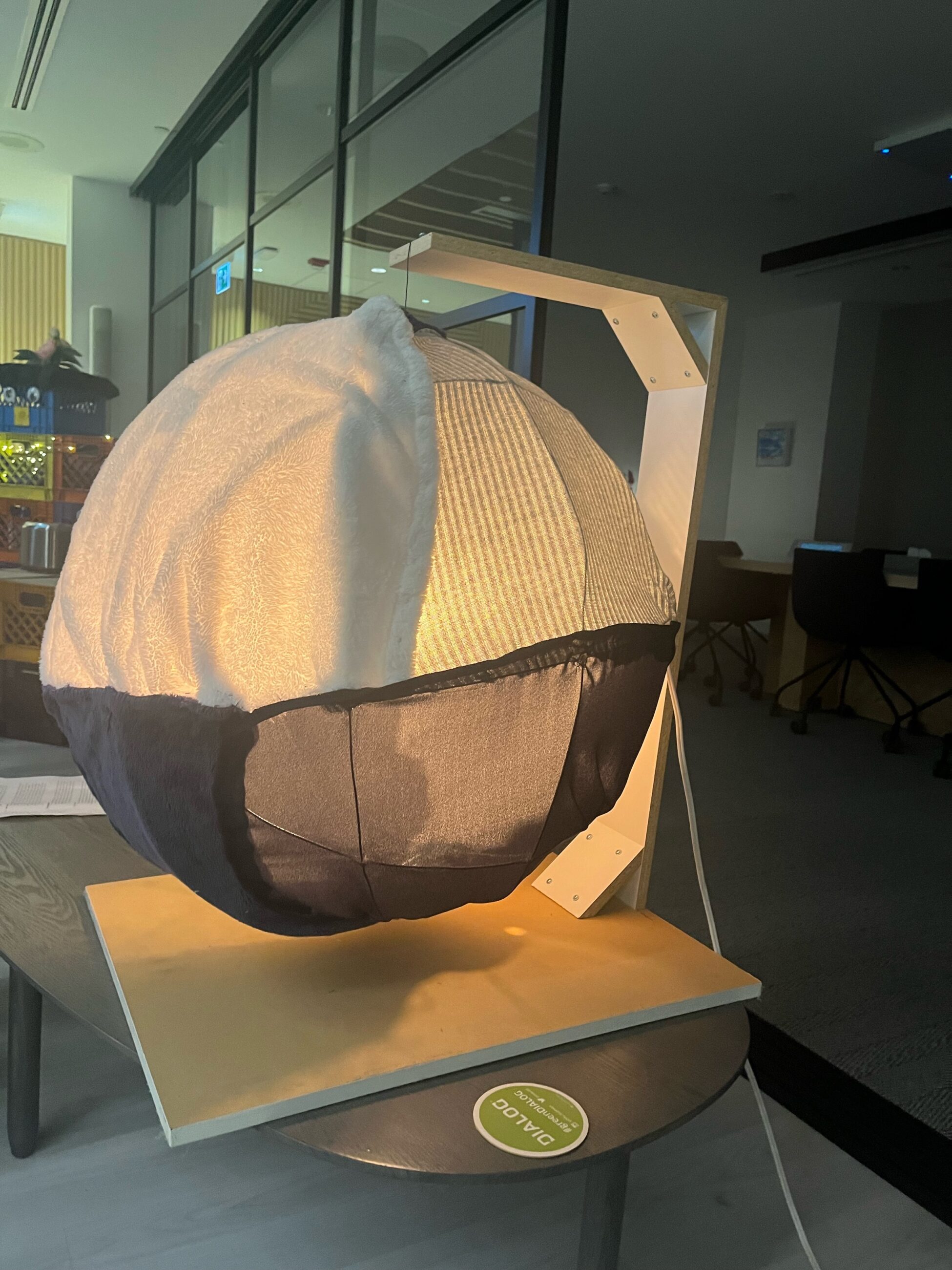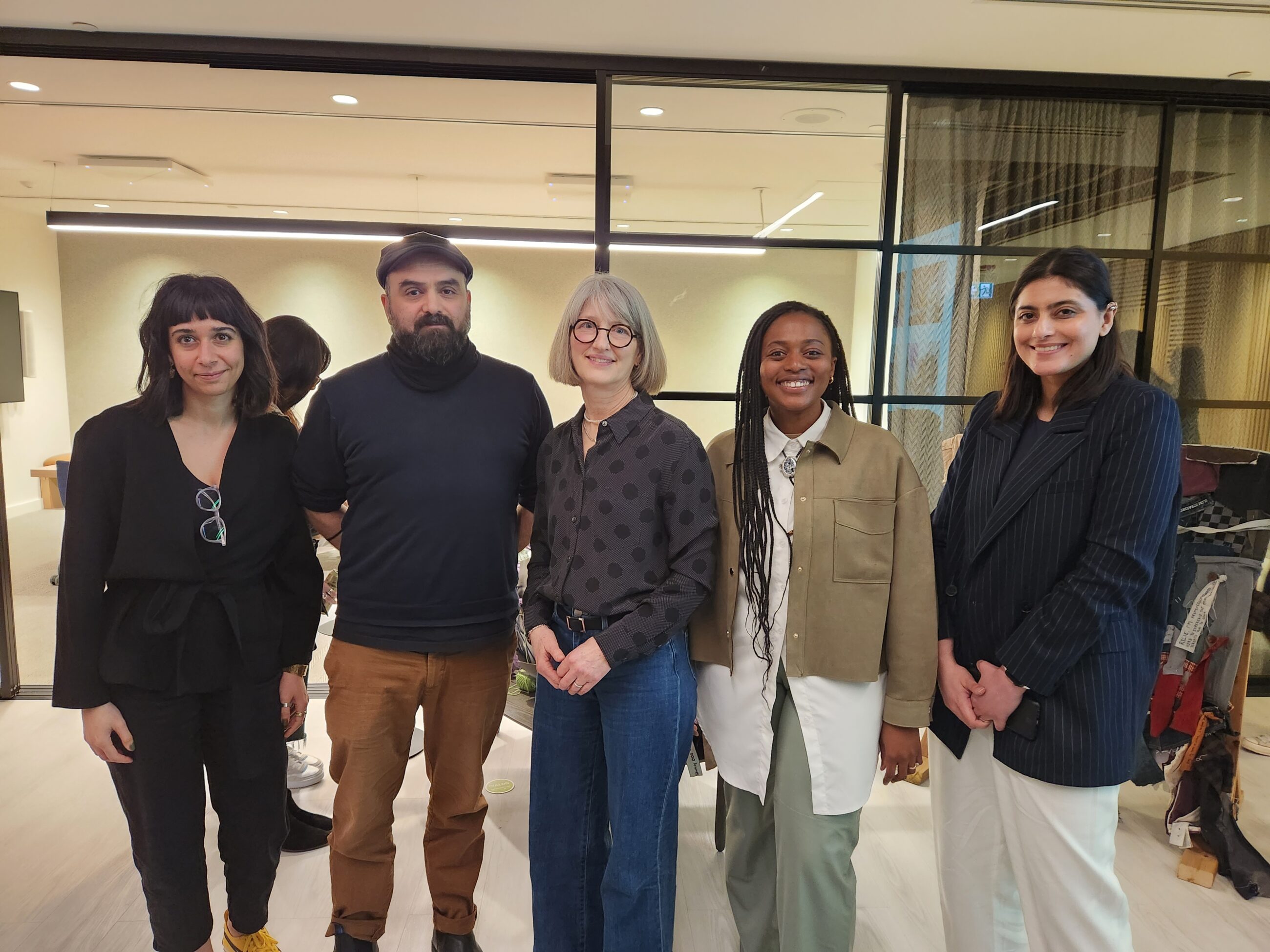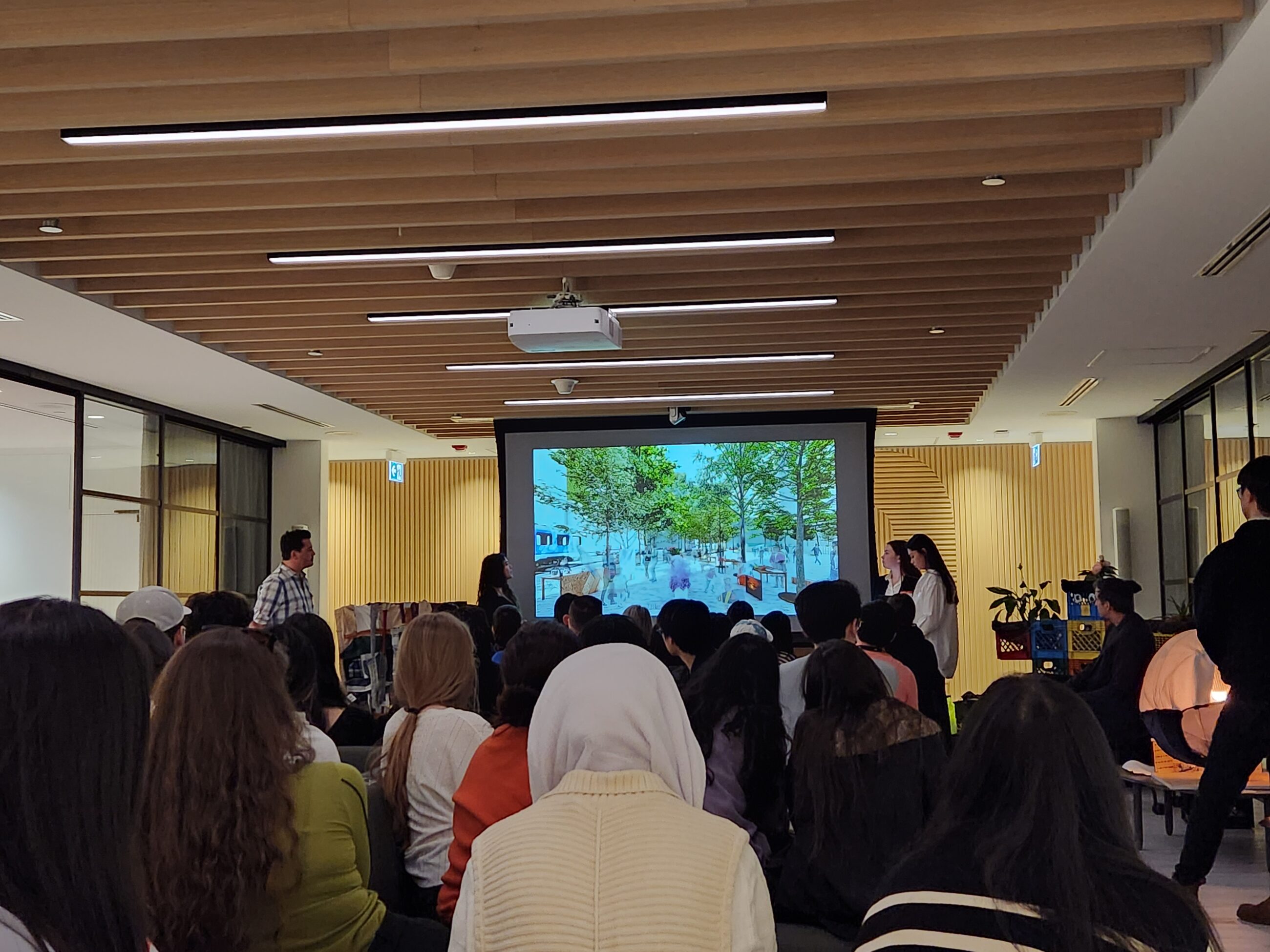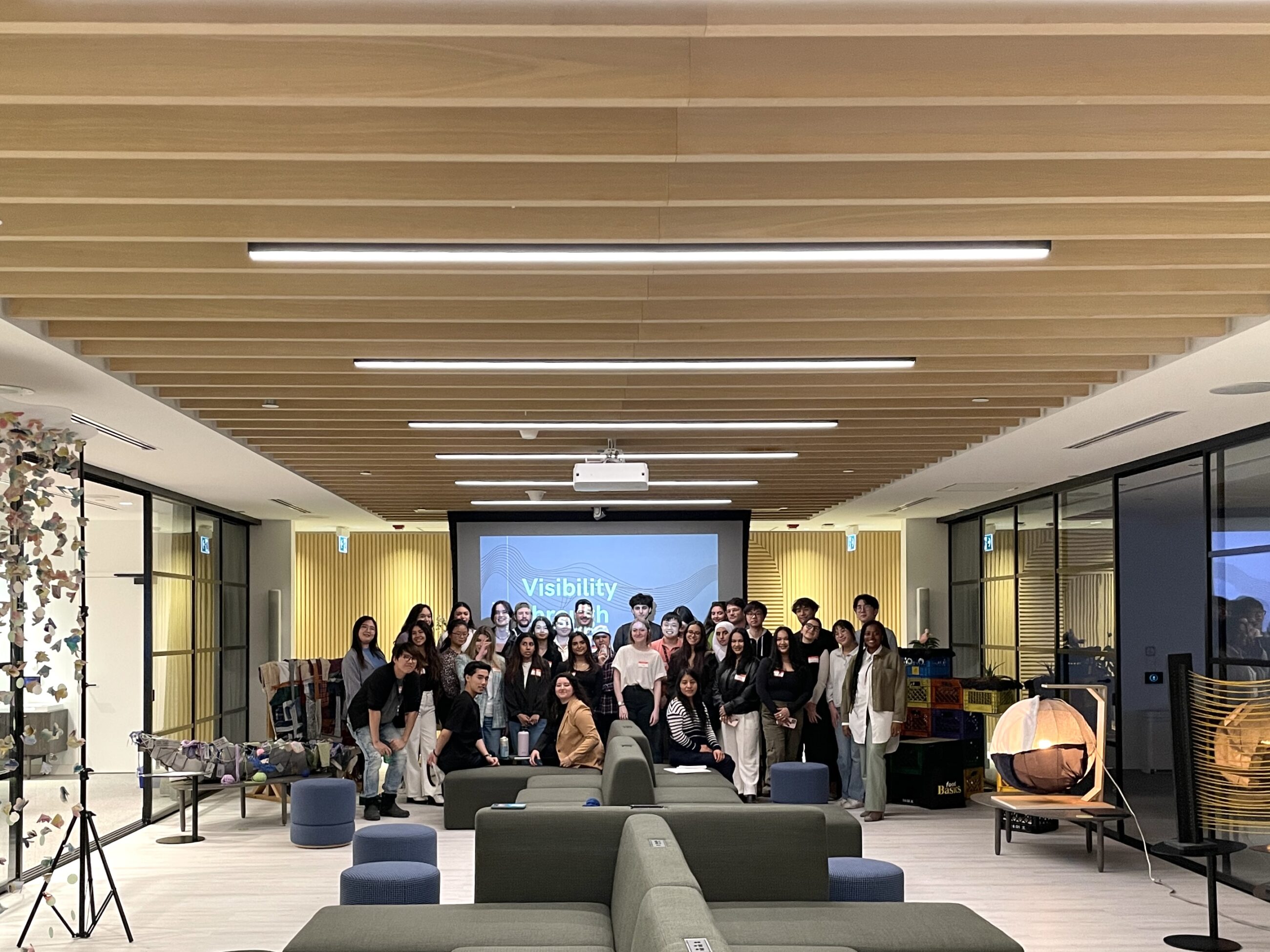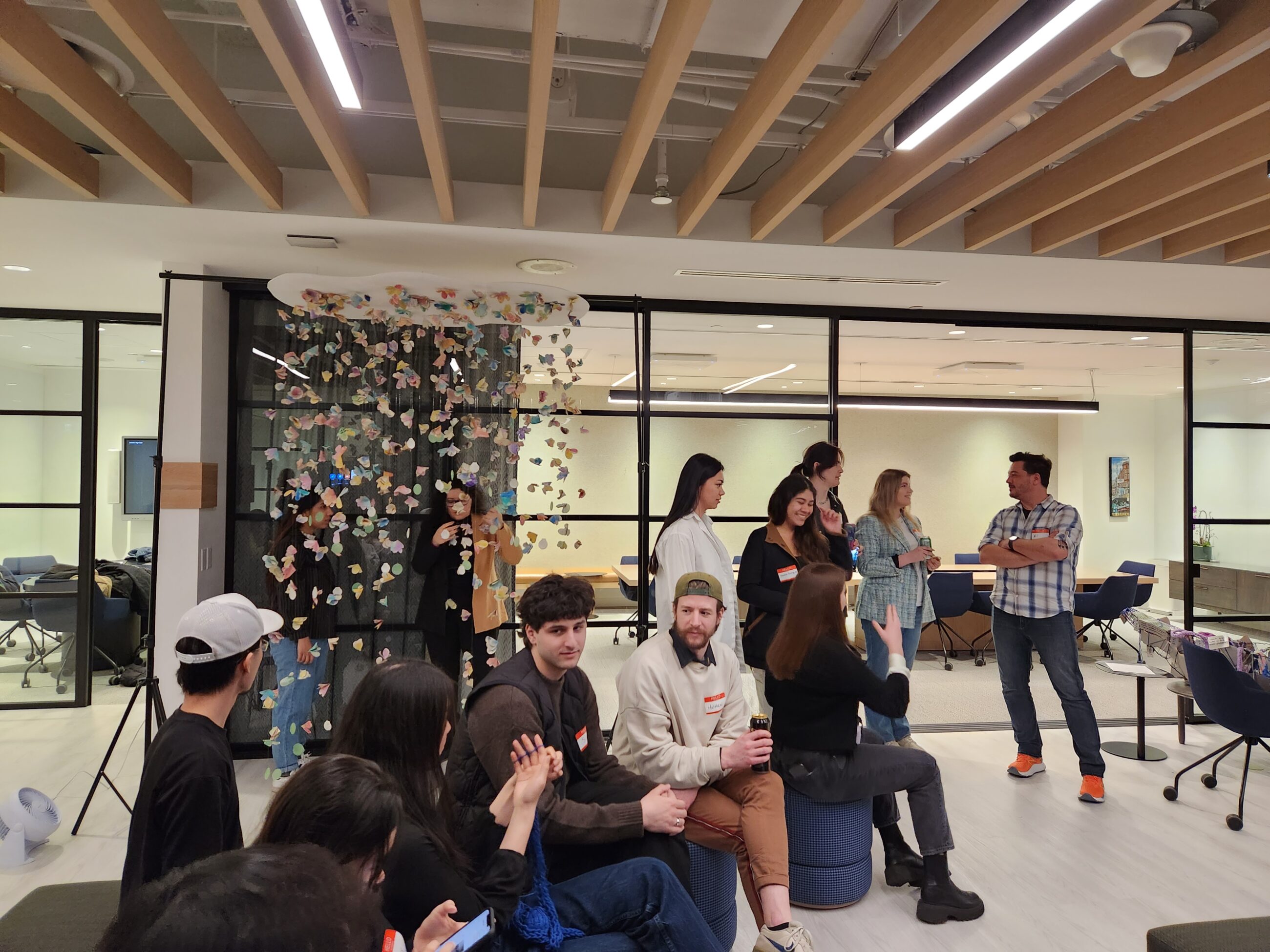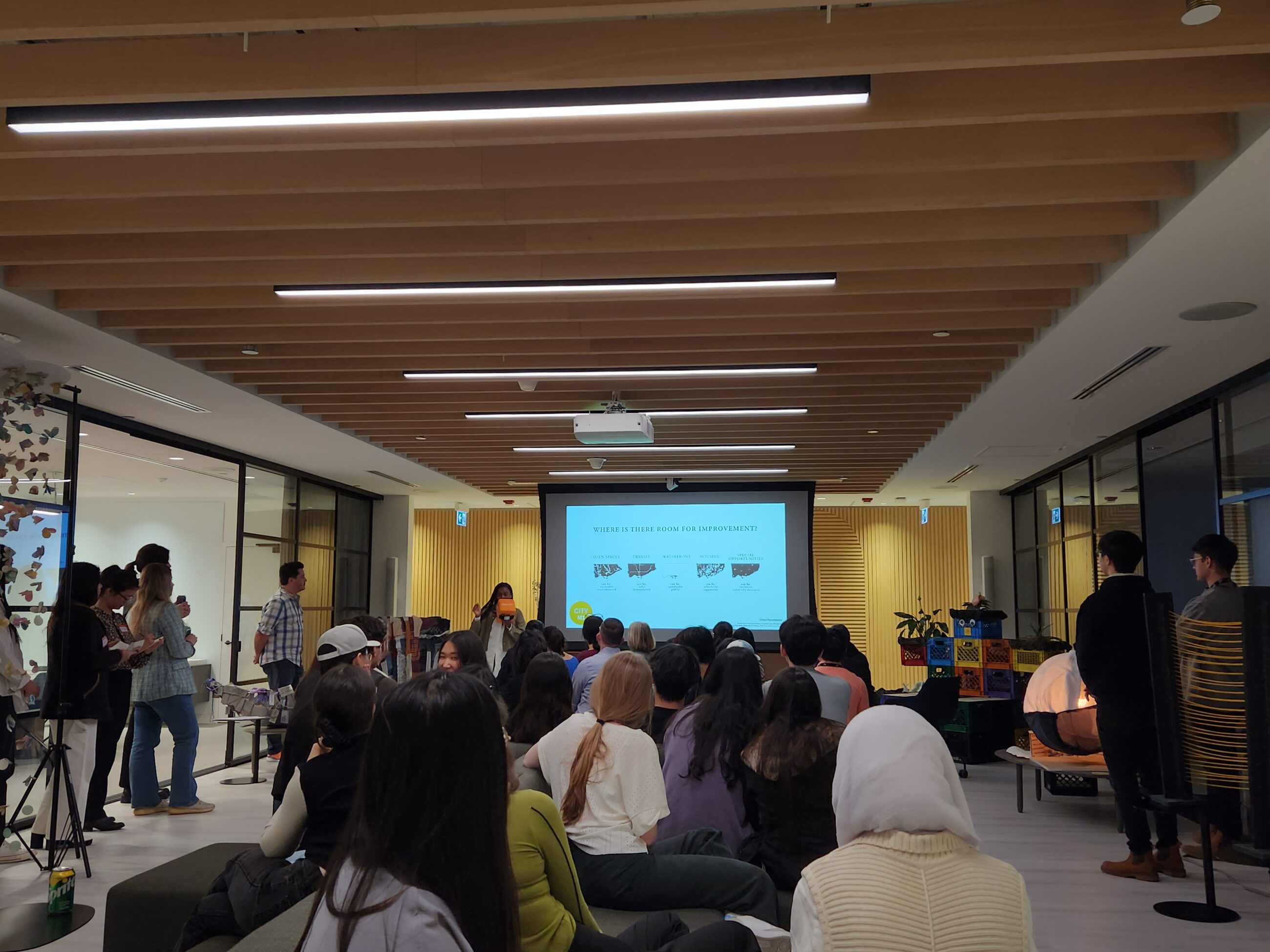On Tuesday, April 4, DIALOG hosted fourth-year students from the University of Toronto in the John H. Daniels Faculty of Architecture, Landscape, and Design to present their final projects.
Urban designer and intern architect at DIALOG, Nicole Nomsa Moyo, also an instructor at the University of Toronto, invited her 40 undergraduate students to present their final exhibition projects at the Toronto DIALOG studio to conclude the semester. The class, called ‘Visibility Through Design’, focuses on celebrating the unseen, and seeking tangible and intangible interventions to better engage with these communities.
“Architects and urban designers are active participants in shaping the culture and identity of the built environment, yet there are so many things we overlook—inclusivity, homelessness, recognizing Indigenous land—all seem to be forgotten in the practice of design,” Nicole shares. “This course was an opportunity to bring some of those topics to life and see how we can address and integrate them into the city’s fabric.” Toronto is one of the most culturally diverse cities in the world, yet there are lost narratives of underrepresented population groups.
The students were tasked with reimagining Yonge-Dundas Square, one of Canada’s busiest intersections and often compared to New York City’s Times Square. Resounding echoes of feedback of the square included not enough green space, feeling overcrowded, too much advertising, not biker-friendly, a lack of cultural representation, and simply underused. The need for bringing a sense of unique Toronto identity and purpose back into the space was apparent.
